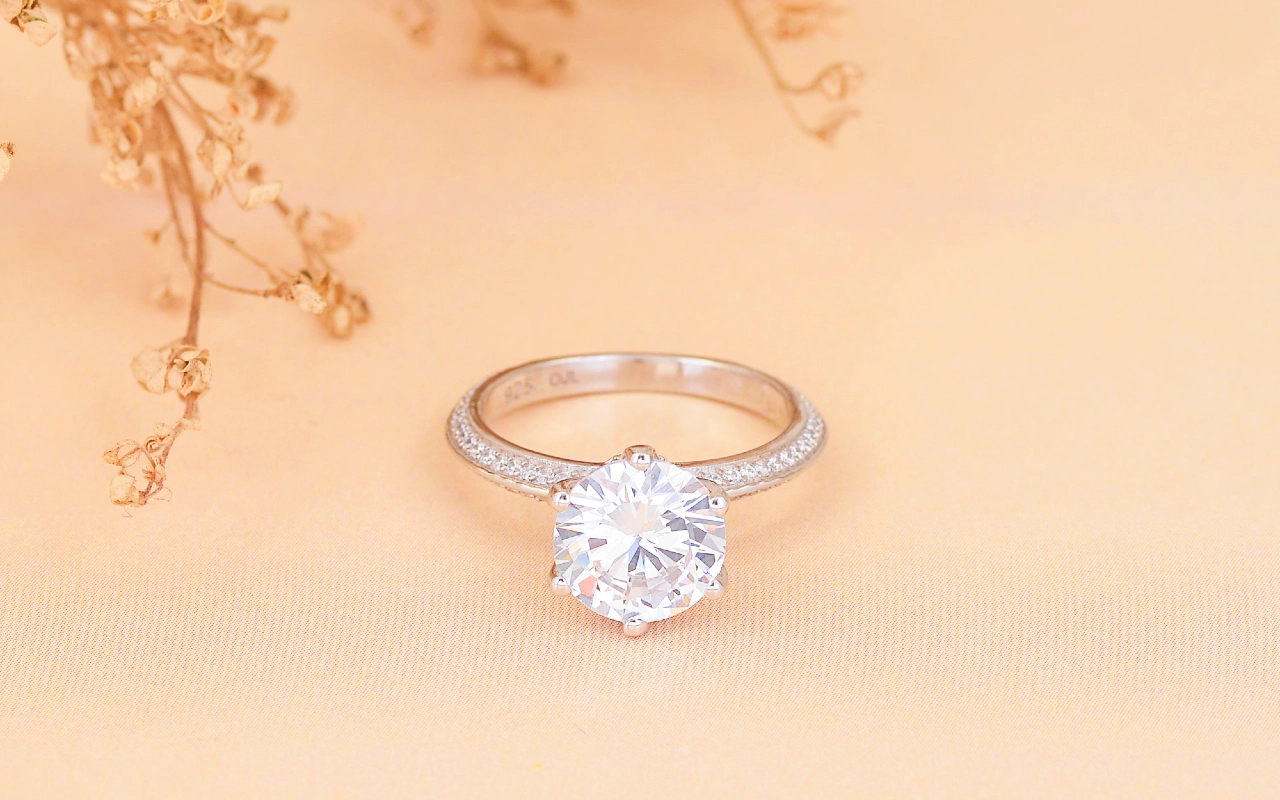
Table of Contents
With dozens of variations of the prong setting, it can be confusing to understand the differences. A question that we often get asked is whether there’s a difference between the luxurious Tiffany setting vs. a prong setting.
Although they are basically the same, the main difference is in branding and pricing. So, what setting is best for you? Should you go with the patented Tiffany setting or stick with the regular prong setting? Let’s take a look.
What’s the Tiffany Setting?
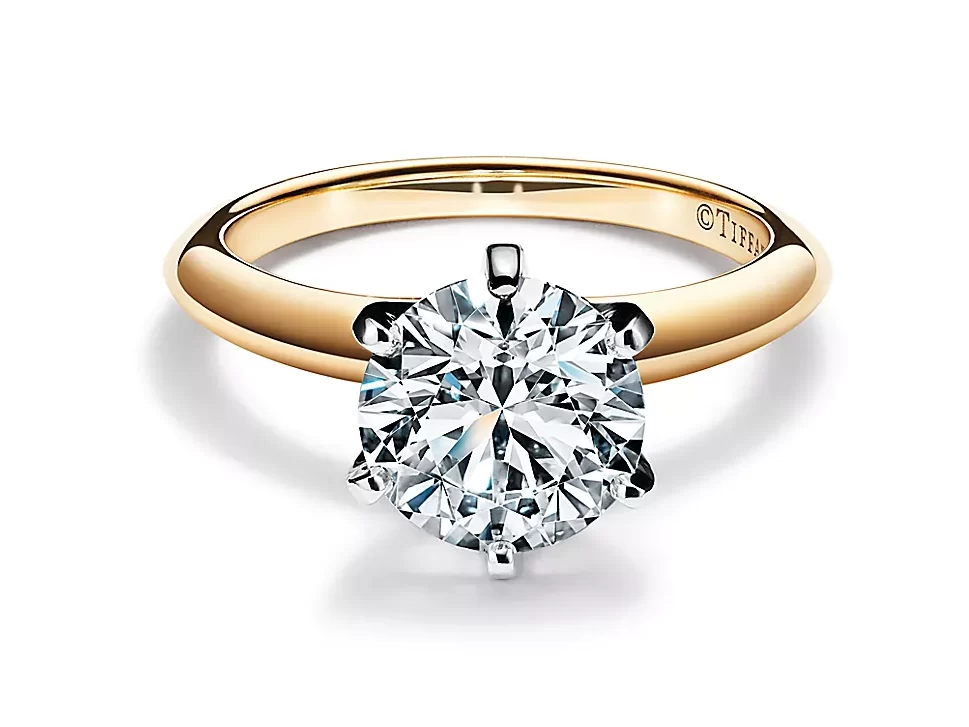
The Tiffany setting for diamond engagement rings is a simple yet elegant variation of the plain old prong setting. Introduced and patented in 1886 by Charles Lewis Tiffany, this new setting would become the face of modern engagement rings.
Despite minor deviations from the traditional prong setting, the engineering and design genius of the Tiffany setting breathed new life into the industry. It encouraged designers to think outside the box and innovate to bring more stylish designs, finding the perfect balance between strength and diamond exposure to light.
Before the Tiffany setting, most engagement rings utilized a variation of the bezel setting, which had diamonds embedded flush within the band or set extremely close to it with a basket-like setting covering the entire bottom and sides of the diamond. Although it’s very sturdy and durable, these older designs didn’t account for light reflection from all angles.
The Tiffany setting used six prongs to lift the diamond while securing it. This allowed light to interact with the diamond from all sides, including the bottom, resulting in a diamond engagement ring that’s extra sparkly and optimized for maximum brilliance.
While the classic Tiffany setting works best on a polished band with a solitaire-style brilliant round diamond, there are certain variations incorporating intricate channels and pave designs.
That said, it’s worth noting Tiffany rings, as a luxury brand, can be very expensive. Because of this, many couples prefer to go with a regular prong or a Tiffany-style duplicate.
What is a Prong Setting?
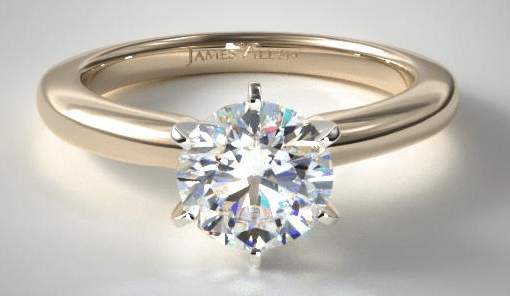
The prong setting is one of the most classic and recognizable settings for diamond engagement rings. Compared to the older bezel and flush settings, the prong design allows the maximum amount of light to travel through the diamond without jeopardizing strength.
The prong setting holds the diamond in place on several edges, using “claws” or prongs to hold onto the diamond. Prong settings can come with any number of prongs, ranging from 3 to 8 and more, which offers a secure setting while still enabling the diamond to sparkle.
The number of prongs or claws used will impact the durability and sparkle of the diamond. The more prongs, the higher the durability but the lower the sparkle.
Differences Between Tiffany and Prong Settings
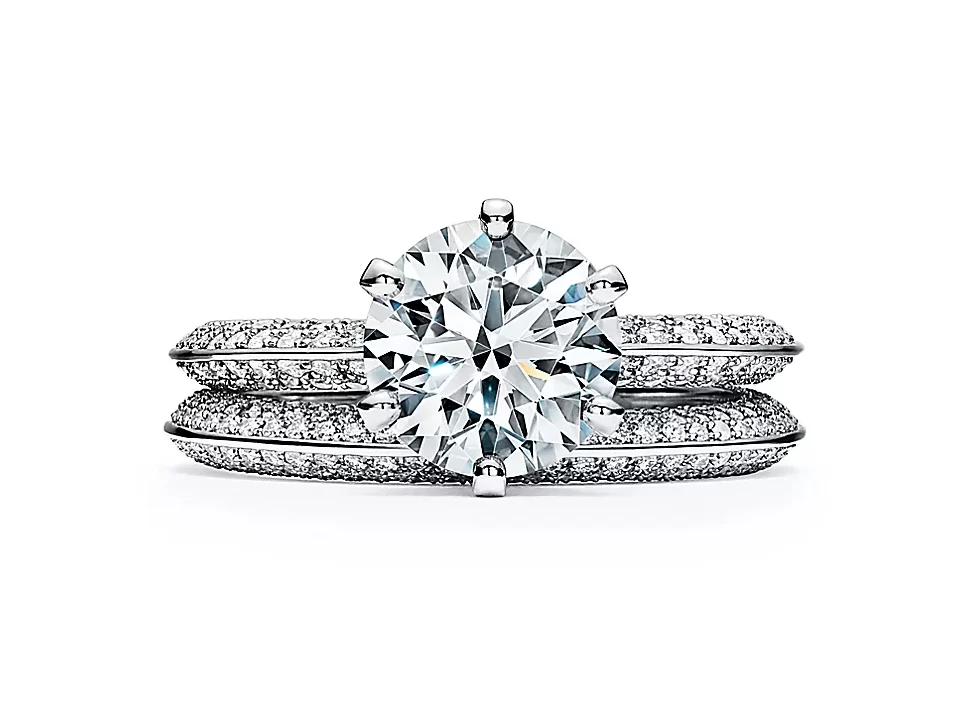
The Tiffany setting is, after all, a variation of the prong setting. This means that at a glance, both could look exactly alike. Having said that, there are certain characteristics that make the Tiffany setting stand apart from most prong settings.
- A Tiffany setting is exclusive to the famous company Tiffany and Co. As a branded ring setting, it’s more expensive and prestigious than a regular setting.
- Tiffany settings always feature a six-prong round-cut solitaire with well-rounded tips.
- Authentic Tiffany settings are handcrafted to fit the diamond. The prongs align perfectly with the shape of the diamond, appearing as though they’re hugging the edges of the diamond. There are no gaps between the prong and the stone, and the round tips slightly bend into the diamond.
- Tiffany settings don’t use basket settings, and at the proper angle, you can always see the bottom of the diamond.
- Diamond engagement rings with the patented Tiffany setting will always run upwards of five figures, so expect to pay a minimum of $15,000 for a one-carat diamond.
Meanwhile, prong settings are more generalized. These don’t necessarily have to be six prongs: they can be three, eight, or twelve – depending on the specific design.
The prongs may be perfectly straight, and the tips may not always bend into the edges. They can sometimes appear as if the diamond was just pushed into the prongs.
Also, the tips of the prongs can take different shapes. They can be round, perfectly square, or even pearl-shaped, resembling claw-style prongs.
Pros and Cons of a Tiffany Setting
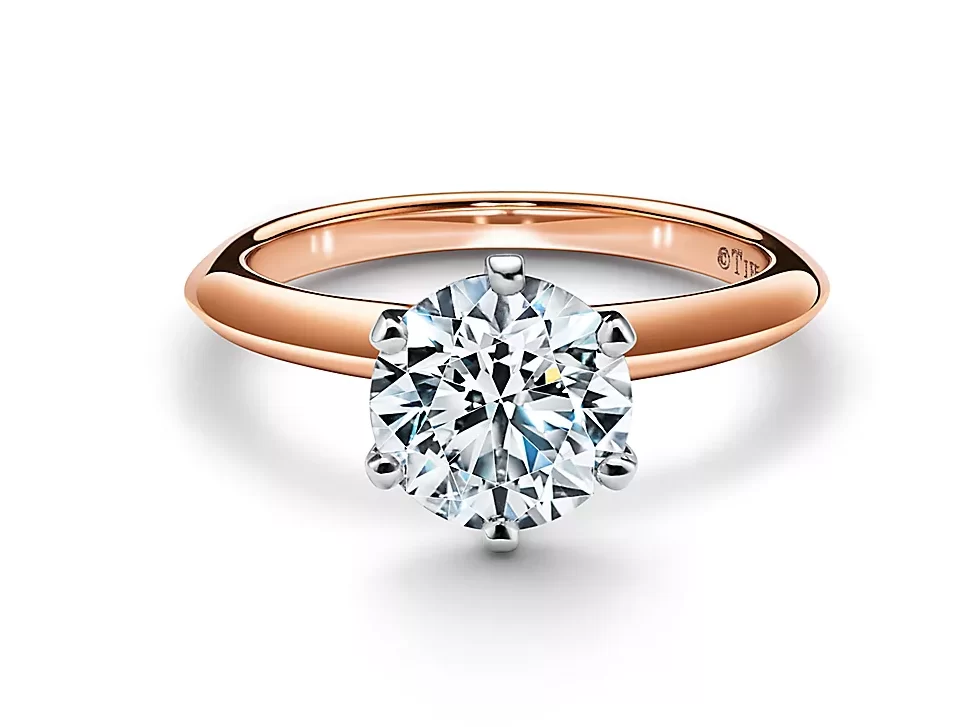
Pros:
- Prestigious and valuable due to branding.
- Very secure, and can last a lifetime without needing to be readjusted or re-tipped.
- Allows more light to enter the diamond, accentuating the brilliance and fire.
- Less likely to snag on hair and clothing since the tips are rounded off and perfectly bent into the stone.
- Requires little to no maintenance, and doesn’t need constant re-tipping as other prong designs.
- Easy to clean.
Cons:
- Restricted to solitaire designs, which means you can only find Tiffany settings that include one big diamond.
- Most pieces include round brilliant cuts only.
- Relatively more expensive, with prices starting at around $15,000.
Which Setting is Right for You?
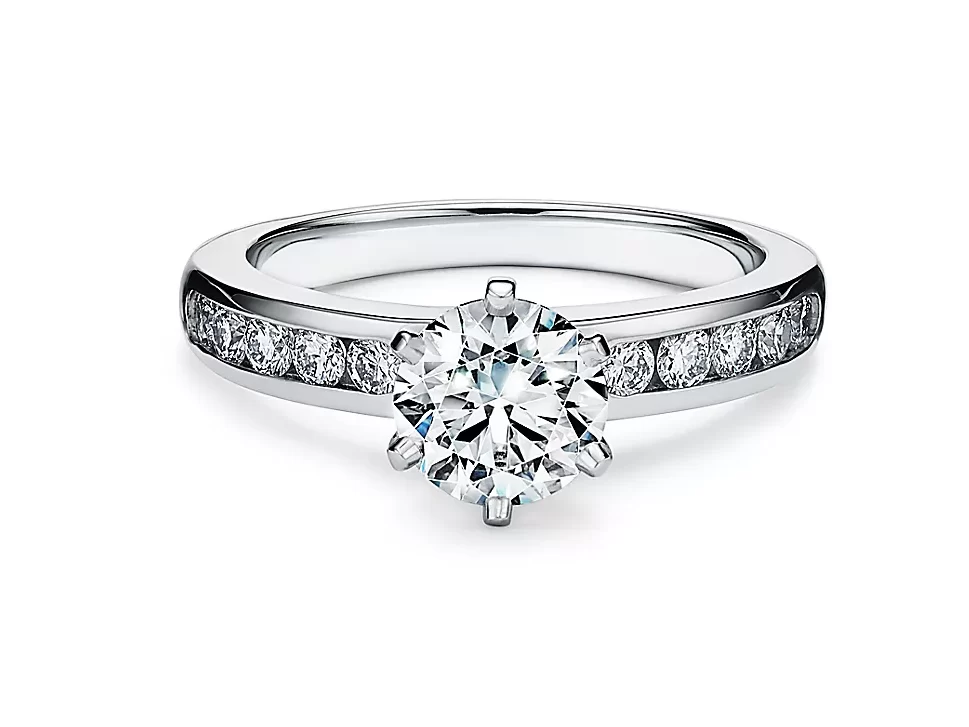
A Tiffany setting is the most durable and timeless design that you can get for an engagement ring. It’s the so-called “face” of diamond engagement rings and the setting everybody knows and loves.
However, a diamond engagement ring with an authentic Tiffany setting can be considerably more expensive. Most of the time, you’re paying for the brand instead of the durability and aesthetics of the setting itself.
So, unless you’re willing to shell out upwards of $15,000 for an authentic Tiffany setting, we recommend a Tiffany-style setting engagement ring or a conventional prong setting.
Wrapping Up
A Tiffany setting and a traditional prong might not have a lot of differences. But Tiffany settings are the best option for brides looking for a timeless solitaire that emphasizes the shape and brilliance of a diamond without sacrificing durability and strength.
However, with limited design choices and a higher price tag, the Tiffany setting might not always be the statement you’re looking for. In that case, it’s best to go with a regular prong or a different design altogether.









